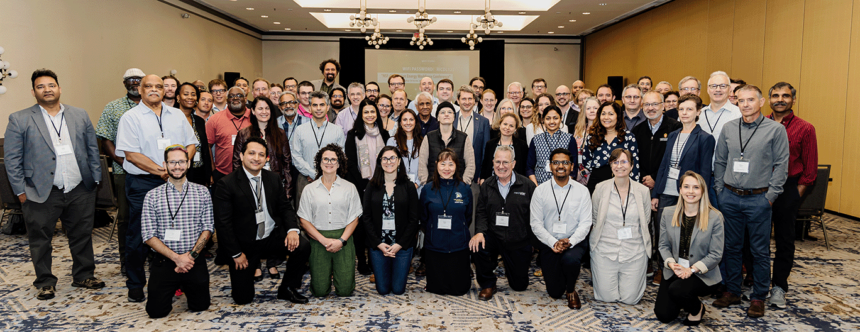
Bringing Together Global Experts to Build a Diverse Workforce for Fusion Energy – A Revolutionary Technology Expected to Transform the Energy Grid to a Cleaner Energy Source
Hampton, Va. (June 6, 2024) – Hampton University recently hosted the National Science Foundation (NSF) Clean Energy Technology (CET) Workforce Accelerator for Fusion Conference, focused on developing a diverse workforce to advance fusion energy, a revolutionary technology expected to transform the energy grid in the coming decades.
“Hosting this conference at Hampton University offered an exceptional opportunity for both faculty and student development,” said Dr. Isi Ero-Johnson, dean of the School of Science at Hampton University. “Attendees gained exposure to pioneering research, connected with esteemed scientists and industry figures, and participated in networking opportunities that enhance career insights. This dynamic learning atmosphere ignites enthusiasm for fusion physics and empowers our community to lead innovation in the field.”
The conference, organized by Dr. Calvin Lowe, physics professor, Hampton University, Dr. Carlos Paz-Soldan, associate professor of Applied Physics and Applied Mathematics at Columbia University, and Dr. Troy Carter, physics professor at UCLA, provided a platform for sharing best practices and lessons learned globally. The aim is to develop a workforce capable of realizing fusion energy’s potential to deliver dispatchable, carbon-free power.
“The emphasis of this program and conference is to broadly engage demographically and geographically diverse educational institutions and covers a broad scope from PhD education to training technicians,” said Dr. Vyacheslav Lukin, program director of the Division of Physics at the NSF. “Hampton University was an excellent host, showcasing the significant developments happening here. It is crucial for funding agencies and the community to understand the opportunities and challenges faced by institutions.”
Paz-Soldan, highlighted the significant job creation potential in the fusion energy sector. “If the full potential of fusion technology is realized, it could generate hundreds of thousands of jobs,” said Paz-Soldan. “This projection underscores the importance of developing a skilled workforce to meet the ambitious goal of deploying pilot fusion plants by the late 2030s.”
The NSF CET Workforce Accelerator for Fusion Conference saw participation from over 70 experts, with hundreds of registrants, and virtual attendees from across the globe. Representatives from around 40 to 50 universities, as well as national laboratories and industrial companies, convened to collaborate on fusion energy.
Fusion energy, currently in the development stage with prototype devices and ongoing system studies, promises to offer large-scale, carbon-free power. Beyond reducing carbon emissions, fusion energy could also power transportation systems by serving as a heat source to produce hybrid or other heat-based fuels for vehicles.
As fusion energy development progresses, it parallels the growth seen in other technological sectors, emphasizing the need for a skilled and diverse workforce. The conference’s goal was to identify the specific needs of the fusion energy sector and create training and support programs to build this workforce, ultimately producing actionable proposals for funding agencies to support fusion energy’s future. The NSF CET Workforce Accelerator for Fusion Conference marks a significant step toward a sustainable future powered by fusion energy. By fostering collaboration and knowledge sharing, the conference paved the way for a diverse and capable workforce to drive the growth of fusion energy technology.
![]()
